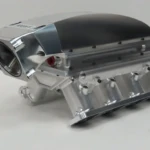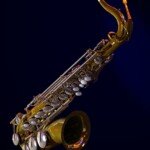Precision edges: How five-axis CNC machining is powering the aerospace industry
The relentless pursuit of efficiency, safety and performance pushes aerospace engineering to its limits. At the heart of building gravity-defying aircraft, spacecraft and propulsion systems lies an unwavering need for precision manufacturing. Complex geometries, uncompromising material properties and tolerances measured in microns define this field. This is where computer numerical control (CNC) machining is particularly advanced Five-axis CNCemerging not just as a tool but as a fundamental enabler of aerospace innovation.
Aerospace Challenge: Why precision is non-negotiable
Aerospace components operate in extreme environments – high pressures, temperature fluctuations and huge mechanical stresses. Failure is not an option. From critical turbine blades and complex fuel system components to airframe structural elements and landing gear components, each component must demonstrate:
- Unparalleled Accuracy: Perfect size is crucial. Even small deviations can disrupt airflow, cause vibration, reduce fuel efficiency or cause catastrophic failure.
- Processability of special materials: Aerospace relies on high-strength, lightweight and heat-resistant elastomeric materials such as titanium alloys (Ti-6Al-4V), hardened stainless steels, high-performance aluminum alloys (7075-T6) and nickel-based superalloys (Inconel 718, Hastelloy). These materials are notoriously difficult to process without specialized expertise and equipment.
- Complex geometric shapes: Aerodynamic surfaces, conformal cooling channels within engine parts, and complex structural lattices require shapes that cannot be achieved through basic machining or traditional tooling.
- Surface integrity and service life: Surface finish is not just about appearance; It affects fatigue life, corrosion resistance and fluid dynamics. Tight tolerances require excellent surface quality within the machining process itself.
- Weight optimization: Every gram saved means an increase in fuel efficiency and payload. Achieving maximum strength with minimum material requires highly optimized and often complex structures.
Traditional three-axis CNC machining struggles to efficiently meet these demands, often requiring multiple setups, complex fixtures, and the potential for greater errors and longer lead times.
Five-Axis CNC Enter: A Game Changer for Aerospace Manufacturing
Five-axis CNC machining transcends the limitations of three-axis CNC machining. Instead of just moving the cutting tool along the X, Y, and Z linear axes, a five-axis machine tool adds two rotary axes (usually a turntable that tilts and/or rotates the workpiece). This simultaneous movement allows:
- Complexity of a single setup: Complex aerospace parts with multiple face features can often be machined in a single setup. This significantly reduces operating errors, improves positional accuracy, and shortens production time.
- Unparalleled geometric freedom: Rotating axes allow the tool to approach the workpiece from almost any angle, enabling the creation of deep cavities, complex contours, undercuts and free-form surfaces (such as propellers or turbine blades) that would not be possible with fewer axes.
- Dramatically improved surface finish: By maintaining an optimal cutting angle (tool orientation) relative to the workpiece surface throughout the entire machining path, five-axis machines achieve superior surface quality, reduce the need for extensive secondary finishing operations and improve part performance.
- Extend tool life and efficiency: Tilt tools allow for better maneuverability and allow the use of shorter, sturdier tools. This minimizes tool deflection, vibration and breakage, which is especially important when machining hard alloys like Inconel, resulting in longer tool life and faster material removal rates.
- Efficient production of prototypes and small series production: Five-axis CNC, while ideal for complex production runs, is also valuable for rapid prototyping, functional testing, and low-volume/high-mix production scenarios common in aerospace development and MRO (maintenance, repair, and overhaul).
Materials Expertise: Mastering Flying Metal
Successfully processing aerospace alloys requires more than advanced equipment; it requires deep metallurgical knowledge and precise process control. Gretel has extensive expertise in handling the full range of critical aerospace materials:
- Aluminum alloys (such as 2024, 6061, 7075): Due to its excellent strength-to-weight ratio, it is widely used in structural supports, fuselage components and interior interiors.
- Titanium alloys (e.g., ti-6al-4v, cp): Critical for airframe structural components, engine components (due to high strength and corrosion resistance at high temperatures) and landing gear.
- Stainless steel (such as 303, 304, 316, 17-4PH, 15-5PH): Used in fuel systems, hydraulic components, fasteners and structural parts requiring excellent corrosion resistance and strength.
- Heat-resistant superalloys (e.g. Inconel 625, 718, 925; Hastelloy X): The backbone of jet engine turbine blades, discs, combustion chambers and exhaust systems, is selected for its strength retention and resistance to oxidation in extreme temperatures.
- Engineering plastics and composites (less common, but suitable for specific applications): Examples include PEEK and Ultem for insulation, brackets or low-load components.
GreatLight’s engineers understand each material’s unique machining characteristics (cutting forces, thermal sensitivity, work hardening), allowing them to optimize tool paths, select the perfect cutting tool, and set parameters to achieve perfect results without compromising material integrity.
Beyond cutting: Ferrite’s comprehensive aerospace CNC services
GreatLight is more than just a machine shop; We are your precision aerospace manufacturing partner. Our capabilities extend far beyond machining centers:
- Advanced five-axis CNC machining: Utilizing state-of-the-art equipment, we bring unparalleled geometric capabilities to the production of complex parts.
- Comprehensive technical expertise: Our team solves challenging designs, provides manufacturability feedback (DFM/DFA), and slices complex programs to achieve optimal machining strategies.
- One-stop post-processing and finishing: We simplify your supply chain with comprehensive post-processing services:
- Precision deburring
- Surface treatment (sandblasting, polishing, grinding)
- Heat treatment (quenching, annealing, stress relief)
- Electroplating (nickel, chromium, zinc)
- Anodizing (Type II and III/Aluminum Hardcoat)
- Paints and powder coatings
- Laser engraving and marking
- Strict quality control: Continuous inspection using advanced metrology tools (coordinate measuring machines, optical comparators, surface testers) ensures that every part complies with the most stringent aerospace specifications (AS9100, ISO 9001 inherent in our processes). Detailed documentation is provided.
- Speed and flexibility: We understand the aerospace schedule. Our optimized workflows and throughput ensure quick turnaround without sacrificing quality in prototyping and volume production.
- Cost-effective solution: Leveraging the efficiencies of five-axis machining (reduced setup, tooling, labor) and our scale, GreatLight delivers superior accuracy at a competitive price. We focus on maximizing value throughout the entire manufacturing process.
Conclusion: Enhance your aerospace components with GreatLight Precision
The future of flight depends on the perfection of every component. Five-axis CNC machining is an indispensable technology to overcome the complexity, material demands and precision requirements of modern aerospace manufacturing. With its advanced five-axis capabilities, deep materials expertise, strict quality commitment and comprehensive one-stop service, Honglaite is uniquely positioned to become your trustworthy partner.
We specialize in transforming challenging designs into perfectly machined aerospace realities – no matter how complex the geometry or demanding the material requirements. If you are faced with a difficult metal part manufacturing problem or need a custom precision machining solution, look no further. Experience the GreatLight difference: unparalleled technical capabilities, uncompromising quality and value-driven service.
Customize your precision aerospace parts today. Request a quote from GreatLight!
FAQ: Manufacturing Aerospace CNC Parts with GreatLight
Q1: Why is five-axis CNC so important for aerospace parts compared to three-axis?
A1: Aerospace parts often have complex 3D contours, deep cavities, and features on multiple inclined surfaces. Three-axis machining requires extensive setup of such parts, increasing the risk of errors, extending lead times, and often requiring complex fixtures. Five-axis CNC allows these geometries to be machined in a single setup with superior tool access, resulting in complex shapes, better surface finishes, reduced errors, faster production, and ultimately components that meet the extreme demands of the aerospace environment.
Q2: What aerospace-grade materials can Honglaite process?
A2: Haolite has extensive expertise in processing a full range of critical aerospace materials, including titanium alloys (Ti-6Al-4V), nickel-based superalloys (Inconel 625, 718), hardened stainless steels (such as 17-4PH, 15-5PH), high-strength aluminum alloys (2024, 7075-T6), and various high-performance steels. We understand the precise processing parameters required for each product.
Q3: How does Hualite ensure the accuracy and quality required for critical flight components?
A3: Our commitment is unwavering. We combine:
- Advanced five-axis CNC machine tools are known for their high precision and repeatability.
- Extensive operator and programmer expertise.
- Strict processing protocols tailored to each material are strictly adhered to.
- Comprehensive process and final inspection using coordinate measuring machines (CMM), advanced optical systems and precision gauges.
- Robust quality management principles.
Q4: What post-processing services can Haolite provide for aerospace parts?
A4: To provide ready-to-install components, GreatLight offers a full suite of post-processing services tailored to aerospace needs, including precision deburring, sand blasting, heat treatment (annealing, stress relief, hardening), precision grinding, anodizing (Type II and III hardcoats), electroplating (electroless nickel, chromium), painting, powder coating and precision marking/laser engraving.
Q5: What is the typical lead time for custom aerospace parts production?
A5: Delivery times vary greatly based on part complexity, materials, quantity, and post-processing required. However, by leveraging the efficiency and streamlined workflow of five-axis machining, GreatLight focuses on delivering quick turnaround. Prototypes can typically ship within a few days; complex production runs take longer. We prioritize clear communication and provide timely project-specific delivery time estimates.
Q6: Does Glow only serve the aerospace industry?
A6: While aerospace precision is a core specialty, our advanced five-axis CNC services are equally valuable for demanding applications in other high-tech fields. We also serve the medical device manufacturing (requiring biocompatible materials and ultra-precision), automotive (prototyping, motorsport, electric vehicle components), defense, energy and specialty industrial equipment industries requiring complex, high-precision metal parts.









































